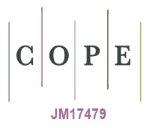Comparative Study on Conventional and Ultrasound Irradiation Promoted Synthesis of 2,3-Disubstitutedquinoxaline Derivatives
DOI:
https://doi.org/10.23851/mjs.v28i3.207Keywords:
ultrasonic, chalcone, quinoxalineAbstract
A series of ten chalcone-substituted quinoxalines (4a-e), (3a-e) starting from 1-(phenylquinoxalin-2-yl)ethanone and 1-(3-methylquinoxalin-2-yl)ethanone have been synthesized using conventional heating and ultrasound-assisted methods. Furthermore, novel of five quinoxaline derivatives including pyrazoline, isoxazole, pyrimidin-2-one, N-acylpyrazoline and pyridin-2-one moieties were also prepared from the reaction of chalcone compound 4a with different cyclization reagents using the same strategy. The structures of all synthesized compounds were established on the basis of FT-IR, 1H-NMR and 13C-NMR. The ultrasonic irradiation method provide several advantages over conventional heating method, including shorter reaction times (30-90 min.) and good percentage yields (65% - 88%), comparing with conventional protocol (5 to 20 hrs. with 30% to 55% reaction yields).Downloads
References
Katritzky A. R., Rees C. W. "Charles W. Comprehensive Heterocyclic Chemistry : The Structure, Reactions, Synthesis, and Uses of Heterocyclic Compounds" Pergamon Press, 1984.
(2) Pereira J. A., Pessoa A. M., Cordeiro M. N. D. S., Fernandes R., Prudêncio C., Noronha J. P., Vieira M., "Quinoxaline, Its Derivatives and Applications: A State of the Art Review", Eur. J. Med. Chem. , 97, 2–10, 2015.
(3) Lindsley C. W., Zhao Z., Leister W. H., Robinson R. G., Barnett S. F., Defeo-Jones D., Jones R. E., Hartman G. D., Huff J. R., Huber H. E., Duggan M. E., "Allosteric Akt (PKB) Inhibitors: Discovery and SAR of Isozyme Selective Inhibitors", Bioorganic Med. Chem. Lett., 15 (3), 761–764, 2005.
(4) Ramli Y., Moussaif A., Karrouchi K., Essassi E. M., "Pharmacological Profile of Quinoxalinone", J. Chem., 2014, 1–21, 2014.
(5) He W., Myers M. R., Hanney B., Spada A. P., Bilder G., Galzcinski H., Amin D., Needle S., Page K., Jayyosi Z., Perrone M. H., "Potent Quinoxaline-Based Inhibitors of PDGF Receptor Tyrosine Kinase Activity. Part 2: The Synthesis and Biological Activities of RPR127963 an Orally Bioavailable Inhibitor", Bioorg. Med. Chem. Lett., 13, 3097–3100, 2003.
(6) Jung C. Y., Song C. J., Yao W., Park J. M., Hyun I. H., Seong D. H., Jaung J. Y., "Synthesis and Performance of New Quinoxaline-Based Dyes for Dye Sensitized Solar Cell", Dye. Pigment., 121, 204–210, 2015.
(7) Dailey S., Feast W. J., Peace R. J., Sage I. C., Till, S., Wood E. L., "Synthesis and Device Characterisation of Side-Chain Polymer Electron Transport Materials for Organic Semiconductor Applications", J. Mater. Chem., 11, 2238–2243, 2001.
(8) Justin Thomas K. R., Velusamy M., Lin Jiann T., Chuen C. H., Tao Y. T., "Chromophore-Labeled Quinoxaline Derivatives as Efficient Electroluminescent Materials", Chem. Mater., 17 (7), 1860–1866, 2005.
(9) Jin H., Xiang L., Wen F., Tao K., Liu Q., Hou T., "Improved Synthesis of Chalconoid-like Compounds under Ultrasound Irradiation", Ultrason. Sonochem., 15 (5), 681–683, 2002.
(10) Li J.-T., Zhang X.-H., Lin Z.-P, "An Improved Synthesis of 1,3,5-Triaryl-2-Pyrazolines in Acetic Acid Aqueous Solution under Ultrasound Irradiation", Beilstein J. Org. Chem., 3, 13, 2007.
(11) Zare L., Mahmoodi N. O., Yahyazadeh A., Nikpassand M., "Ultrasound-Promoted Regio and Chemoselective Synthesis of Pyridazinones and Phthalazinones Catalyzed by Ionic Liquid [bmim]Br/AlCl3", Ultrason. Sonochem., 19 (4), 740–744, 2012.
(12) Saleh T. S., Abd El-Rahman N. M., Elkateb A. A., Shaker N. O., Mahmoud N. A., Gabal S. A., "Ultrasound Promoted Synthesis of Some Novel Fused Pyrans", Ultrason. Sonochem., 19 (3), 491–497, 2012.
(13) Hu Y., Zou Y., Wu H., Shi D., "A Facile and Efficient Ultrasound-Assisted Synthesis of Novel Dispiroheterocycles through 1,3-Dipolar Cycloaddition Reactions", Ultrason. Sonochem., 19 (2), 264–269, 2012.
(14) Nagargoje D., Mandhane P., Shingote S., Badadhe P., Gill C., "Ultrasound Assisted One Pot Synthesis of Imidazole Derivatives Using Diethyl Bromophosphate as an Oxidant", Ultrason. Sonochem., 19 (1), 94–96, 2012.
(15) Dabiri M., Tisseh Z. N., Bahramnejad M., Bazgir A., "Sonochemical Multi-Component Synthesis of Spirooxindoles", Ultrason. Sonochem., 18 (5), 1153–1159, 2011.
(16) Anil Kumar B. S. P., Madhav B., Harsha Vardhan Reddy K., Nageswar Y. V. D., "Quinoxaline Synthesis in Novel Tandem One-Pot Protocol", Tetrahedron Lett., 52 (22), 2862–2865, 2011.
(17) Muhammad A., Munawar M. A., Athar M., J. Appl. Sci., 7 (12), 1620-1625, 2007.
(18) Ando T., Kimura T., "Perspectives in Sonochemistry", Jpn. J. Appl. Phys., 42 (Part 1, No. 5B), 2897–2900, 2003.
(19) Stefani H. A., Cella R., Dörr F. A., De Pereira C. M. P., Gomes F. P., Zeni G., "Ultrasound-Assisted Synthesis of Functionalized Arylacetylenes", Tetrahedron Lett., 46 (12), 2001-2003, 2005.
Downloads
Key Dates
Published
Issue
Section
License
(Starting May 5, 2024) Authors retain copyright and grant the journal right of first publication with the work simultaneously licensed under a Creative Commons Attribution (CC-BY) 4.0 License that allows others to share the work with an acknowledgement of the work’s authorship and initial publication in this journal.






















